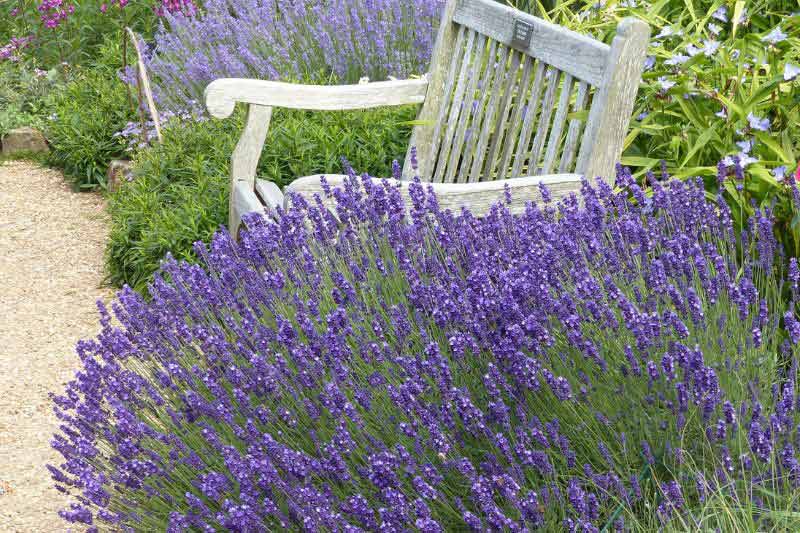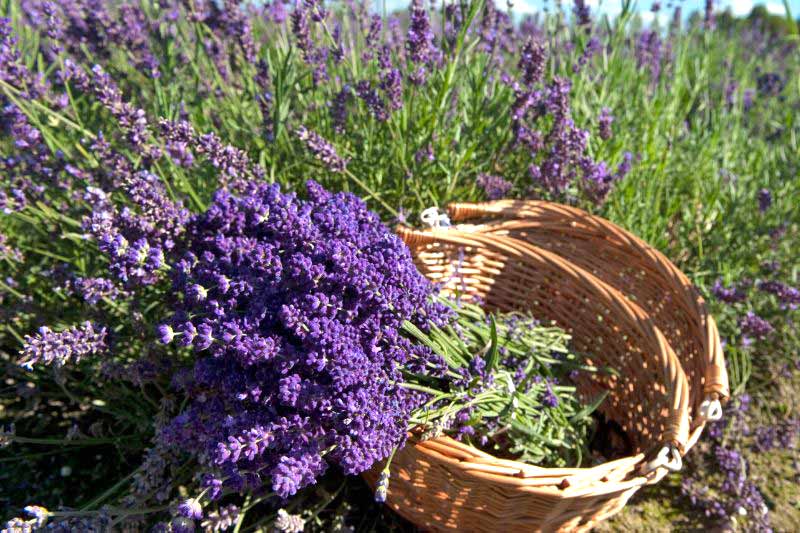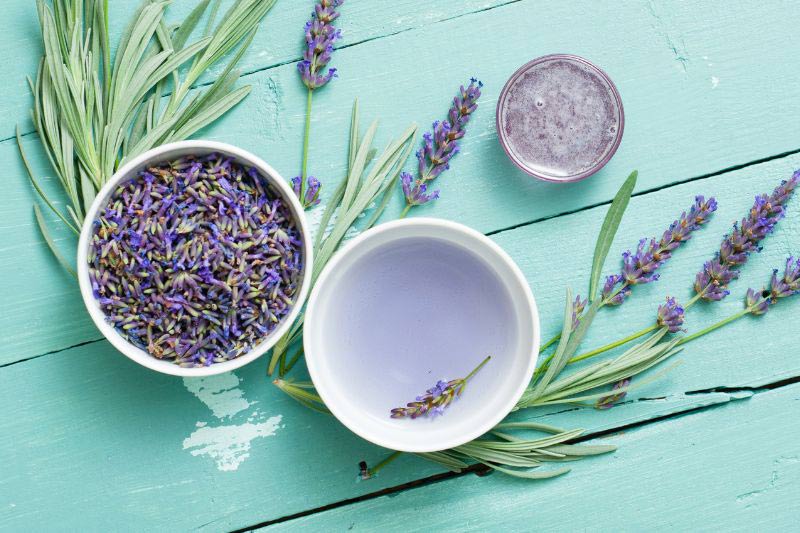Whether for its beautiful floral spikes or its unmistakable fragrance, we adore the lavender. This aromatic perennial, credited with numerous therapeutic properties, can be used both fresh and dried. It features in scented sachets, summer dried bouquets, as well as in culinary, cosmetic and medicinal applications. Among other uses, it allows you to prepare delicious herbal teas that are quick and easy to make, while also being renowned for their benefits.
Let's explore how to properly harvest, store and use lavender for infusions or decoctions.
Which lavender varieties to choose?
There are different species of lavender, the most common and well-known being: French lavender (Lavandula stoechas), English lavender (Lavandula dentata), spike lavender (Lavandula latifolia), and particularly the true lavender (Lavandula angustifolia). For herbal tea, the latter is preferred, also known as "lavande vraie" or "fine lavender".
Several highly aromatic cultivars exist, such as the varieties ‘Essence Purple’, ‘Siesta’, 'Hidcote’, ‘Rosea’ or ‘Arctic Snow’. The spike colours vary from iconic blue-violet to pink and delicate white, but the characteristic fragrance remains very similar.
For any culinary or cosmetic use, we recommend choosing organically grown lavender without pesticides or other chemicals.

Not only highly ornamental, Lavandula angustifolia or True Lavender is also prized for its aromatic qualities
When and how to harvest lavender?
Pick lavender during its summer flowering. Harvesting just before the flowers fully open, in early summer (between June and July depending on the region), will give you a more intense fragrance.
For harvesting, use sharp, pre-sterilised scissors or secateurs to avoid spreading diseases. Cut the stems above the leaves.
Harvest in the morning on a dry day, when the plant's essential oils are most concentrated.

Preferably harvest lavender in the morning
How to dry and store lavender?
Lavender flowers can be used fresh, but they will deteriorate quite quickly. For long-term storage without compromising their essential oils, we recommend air-drying them.
Flat drying
- Lay all the flower spikes flat, without overlapping, on a rack or crate lined with newspaper or a simple cloth.
- Place them in a warm, ventilated area, but out of direct sunlight.
- After a few days, turn the spikes over for even drying.
Bunch drying
- If needed, trim the stems to even lengths for easier bunching.
- Make small bunches about 3 cm in diameter by gathering the stems.
- Tie them with string, an elastic band or raffia.
- Hang the bunches upside down from a hook in a dry, airy place.
Avoid tying too tightly to ensure good air circulation and optimal drying without mould risk.
Storing dried lavender
Once the flowers are completely dry (about 2-3 weeks later, depending on ambient temperature), they will crumble to the touch. You can then rub them off by hand over a work surface or trim the stems to keep the flowers whole.
Place your dried lavender in a sealed paper bag or an airtight food container (metal tin or glass jar). Store in a dry place, away from moisture and sunlight.
Lavender will keep for about a year before gradually losing its aromatic potency.
Enjoying lavender's benefits in herbal tea
Lavender's purported virtues
Among plants credited with numerous health benefits, lavender is certainly one of the most renowned. The plant has been used since antiquity both for its fragrance and for the therapeutic properties associated with it. Today it's a staple of aromatherapy thanks to its potent essential oils.
Lavender is said to be:
- calming, relaxing
- sedative
- healing
- antiseptic
- antibacterial
- anti-inflammatory
- antispasmodic
- diuretic
Consult a doctor before use, especially if you have medical conditions, are pregnant, breastfeeding, or giving to young children.
Lavender infusion
- In a cup (about 150 ml water), place a teaspoon of dried lavender flowers.
- Pour in boiling water.
- Steep for 10 minutes before straining (or use a tea filter that can simply be removed).
You can enhance your infusion by adding other dried herbs and flowers (lemon balm, lemongrass, thyme, sage, chamomile, etc.), honey, ginger or citrus slices.
You can drink 2-3 cups per day, especially in the evening before bed. Lavender infusion can be enjoyed both hot and cold.

Very easy to prepare, the infusion lets you enjoy lavender's many benefits
Beyond its delicate taste and hydrating properties, lavender infusion may help combat stress and anxiety by calming the nervous system. It could soothe migraines, aid digestion and improve sleep quality. Finally, it may also relieve respiratory ailments (bronchitis, sore throats, flu, sinusitis) and support the immune system.
Lavender decoction
For a decoction, stems and leaves can be kept along with the flowers to extract maximum active compounds.
- In a saucepan, place about 50g dried lavender.
- Add 1 litre of cold water and bring to the boil.
- Simmer for about 5 minutes.
- Let cool off the heat.
- Strain.
Lavender decoction can be used for rubbing and massaging. It may soothe insect bites, help heal minor burns, cuts or scrapes, or relieve sprains, strains and sore muscles.
Cosmetically, it could calm skin, reduce redness, speed acne healing and soothe the scalp. Use as a spray.


































![[plantes nom="lavande"] est une plante aux multiples vertus, notamment pour la relaxation et le bien-être. Voici comment préparer une tisane de lavande :
Ingrédients :
- 1 cuillère à café de fleurs de [plantes nom="lavande"] séchées
- 250 ml d'eau bouillante
Instructions :
1. Dans une tasse, mettez les fleurs de [plantes nom="lavande"] séchées.
2. Versez l'eau bouillante sur les fleurs.
3. Laissez infuser pendant environ 5 minutes.
4. Filtrez et dégustez votre tisane de [plantes nom="lavande"].
Cette tisane est parfaite pour se détendre après une longue journée de travail ou pour favoriser un sommeil réparateur. Lavender Infusion](https://en.promessedefleurs.eu/blogwp/wp-content/uploads/2022/06/Comment-faire-une-tisane-de-lavande-.jpg)
Comments